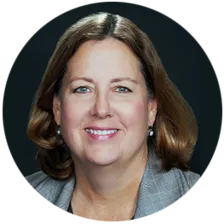Published: 9 October 2017
There is regulatory concern globally over oil and gas major accident risks
Cost-cutting measures in the oil and gas industry could raise the risk level
Digitalization enables cost-effective risk management
Regulators worldwide are showing concern over major accident hazard management (MAHM), and keeping an eye on the safety impact of cost cutting in a long-term period of low oil prices.
As operators seek improved but cost-effective approaches to MAHM, the ability to collect, analyse, and make decisions on real-time data is emerging as a critical factor in identifying developing issues in the condition of assets and how they are operated.
Reasons for concern about the potential for major accidents
In 2016 and 2017, offshore safety has moved centre stage again in the North Sea, one of the most tightly-regulated oil and gas regions in the world.The UK Health & Safety Executive (HSE) recently shared figures with the industry showing that major hydrocarbon releases on the UK Continental Shelf have not been reducing during the last decade, for example; though the number classed as ‘significant’ has dropped. As of September 2017, the HSE was preparing updated guidance on loss of containment, with a special focus on mechanisms causing major releases.
In Norway, the government is conducting its first White Paper review of offshore health, safety and environmental performance in the country’s oil and gas industry since 2011, following serious incidents offshore and onshore in 2015–2016.1
Ageing assets and other industry trends require risk management
Many offshore oil and gas assets worldwide are nearing or beyond originally-designed operating lives – around 25 years for platforms and 30 for pipelines – according to data from Westwood Global Energy Group.The percentage of offshore platforms installed 20 or more years ago is 68% in Western Europe, 70% in Latin America, 71% in North America and 75% in Africa – the regions with the highest such incidence. North America has the highest percentage (31%) of offshore pipeline kilometres aged 30 years or more.
In addition, ownership of some offshore assets is changing as new companies with different business models acquire platforms and infrastructure from existing operators.
Not only older, traditional production assets are on regulators’ radars. In 2015, for example, there was a leak of condensate leading to an explosion resulting in nine people dying and 26 being injured on the floating production storage and offloading (FPSO) unit Cidade de São Mateus offshore Brazil. The report of the inquiry by the Brazilian regulator identified 28 root causes and found flaws in the management of operational safety.2



